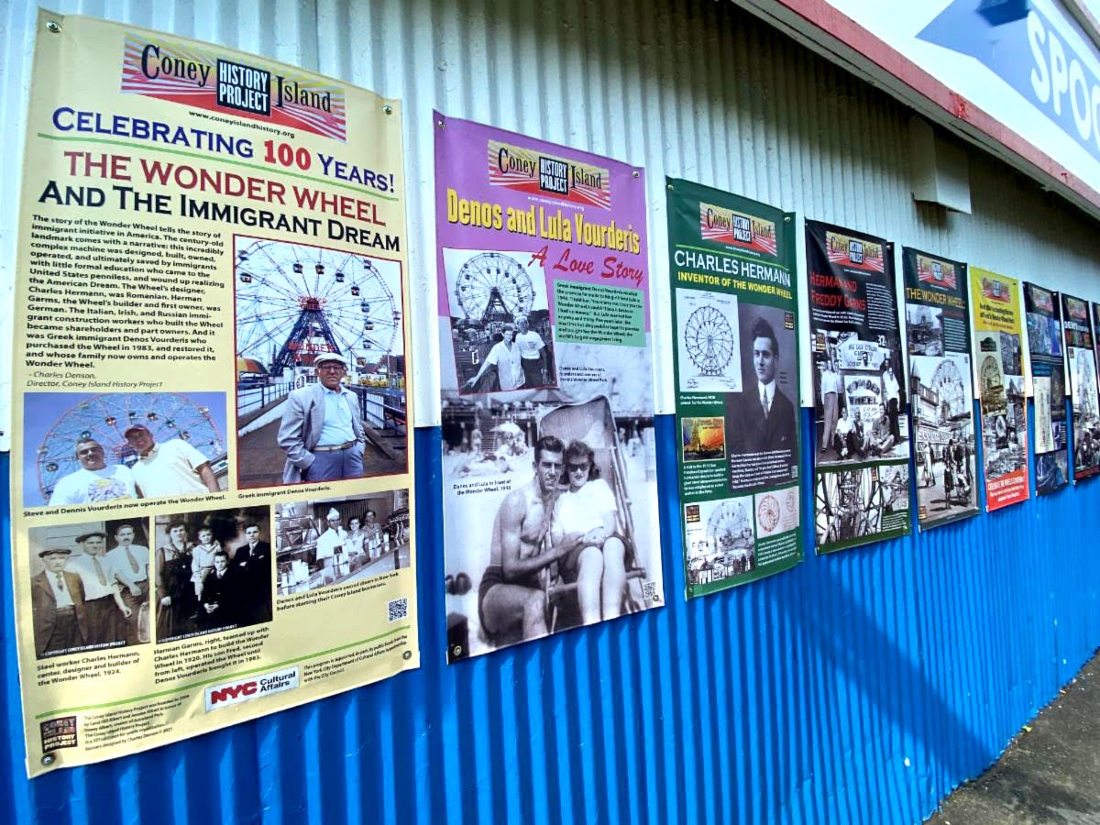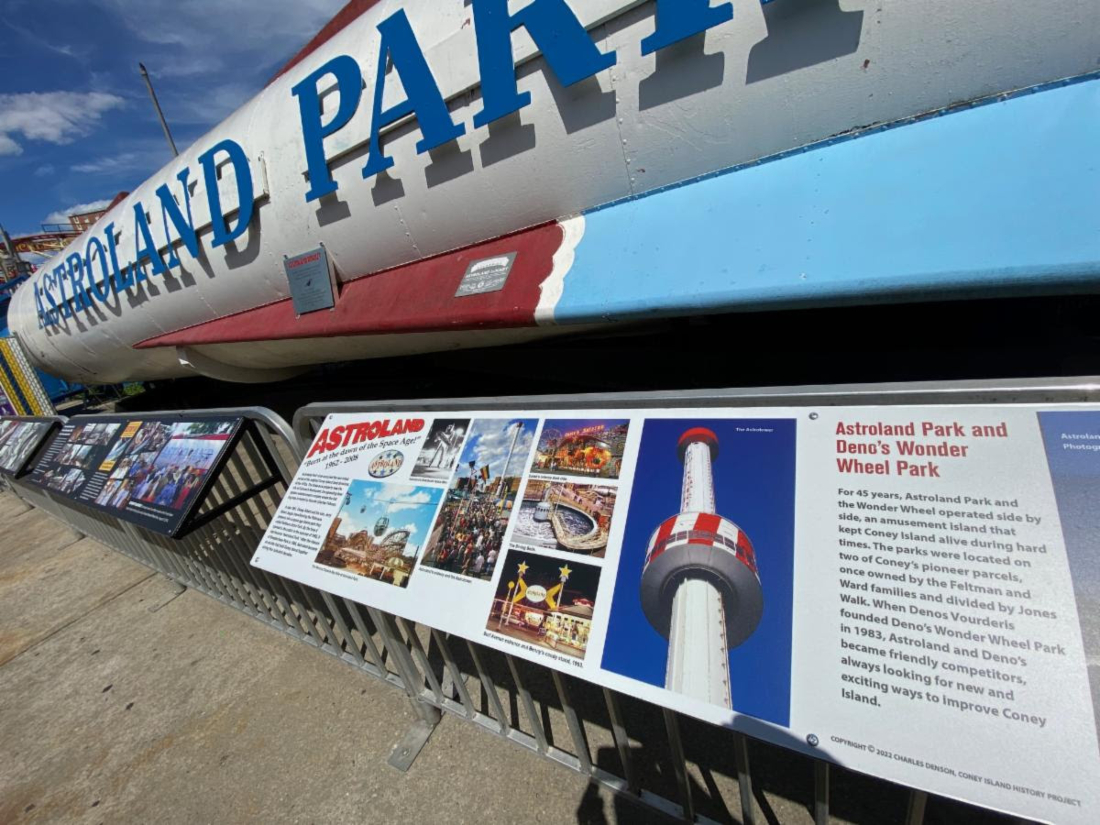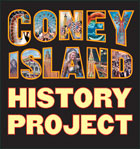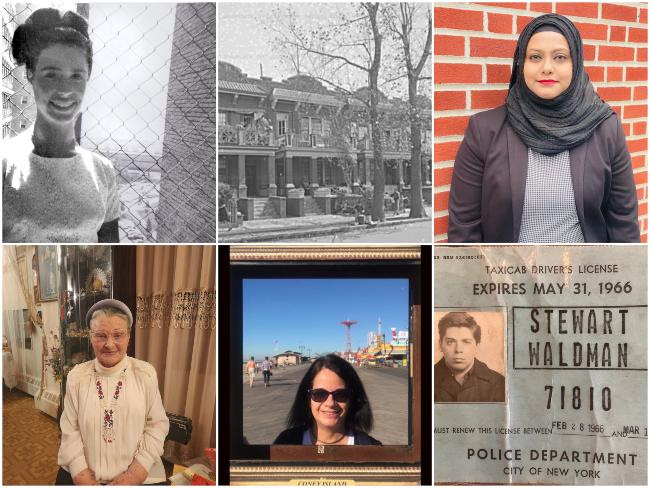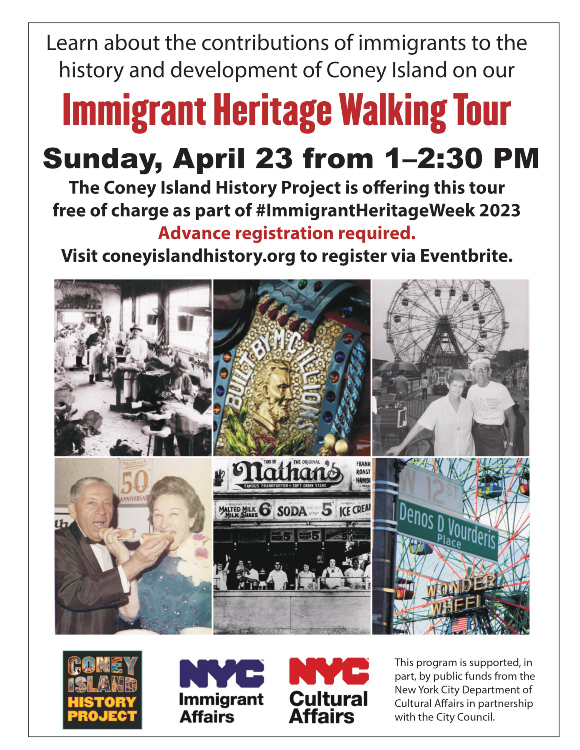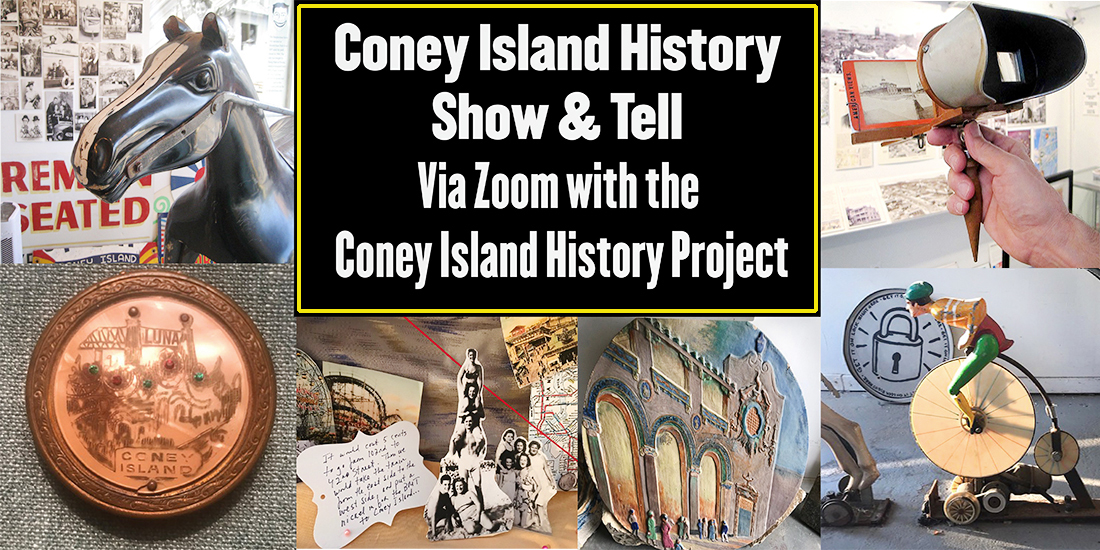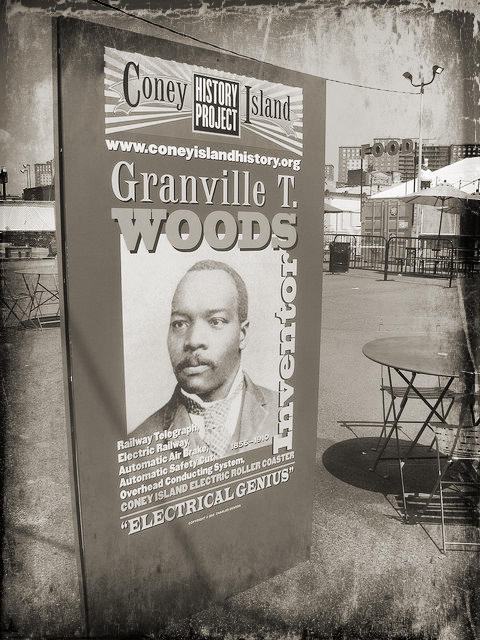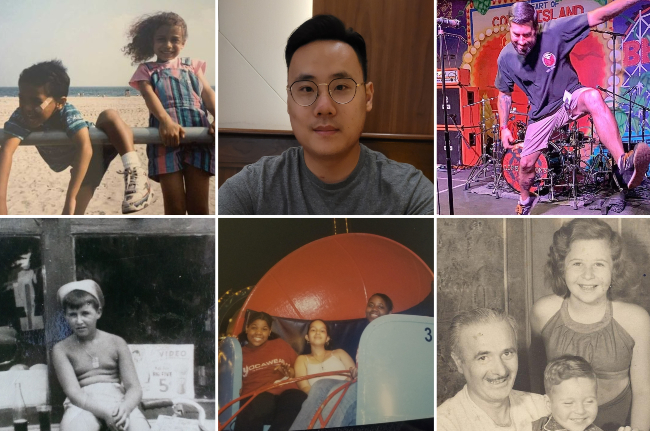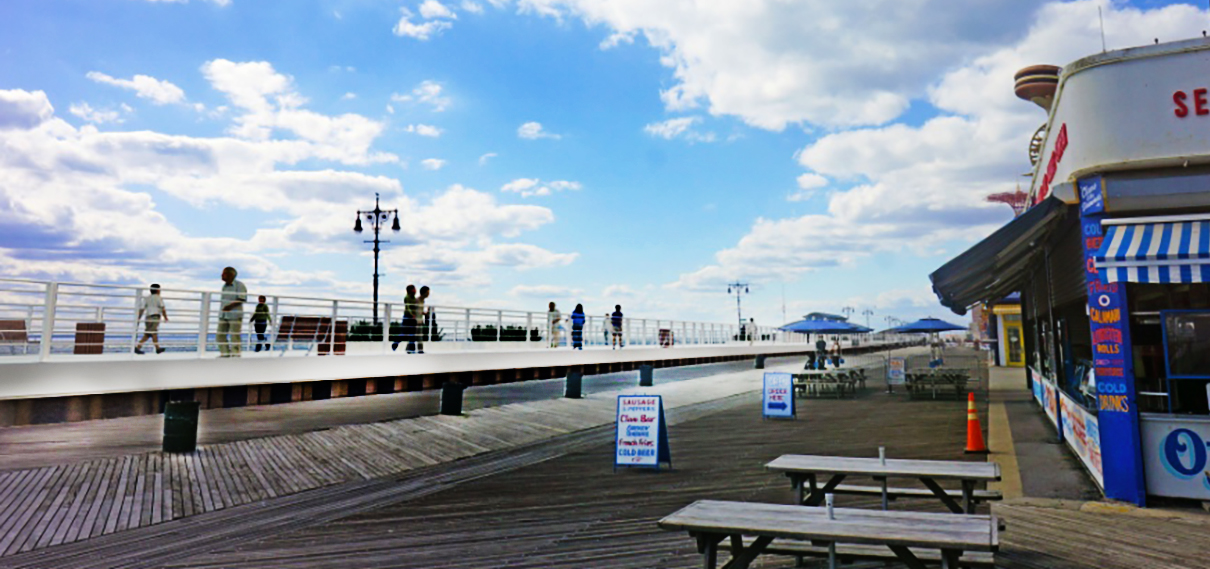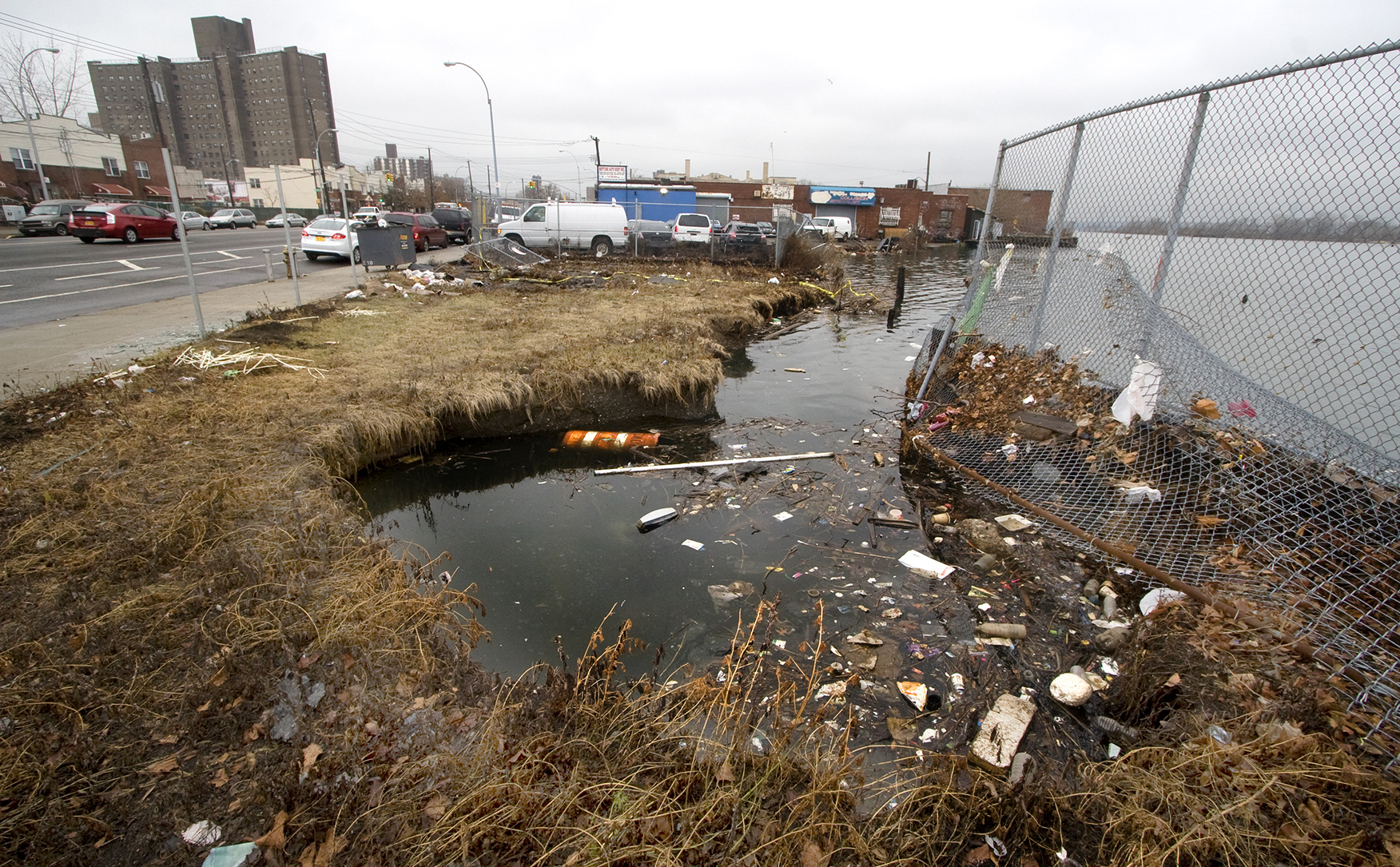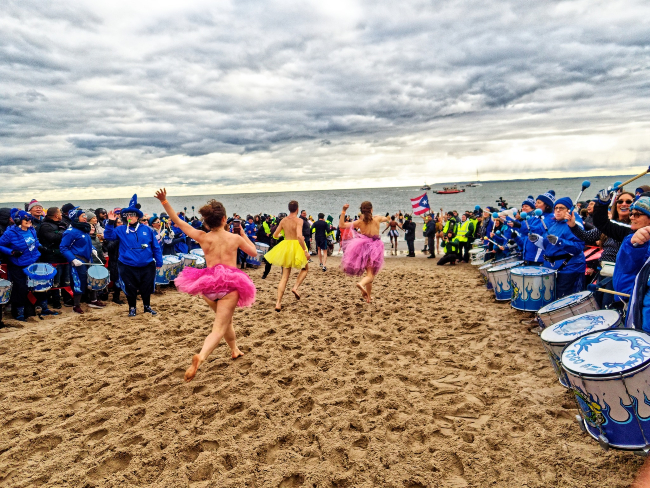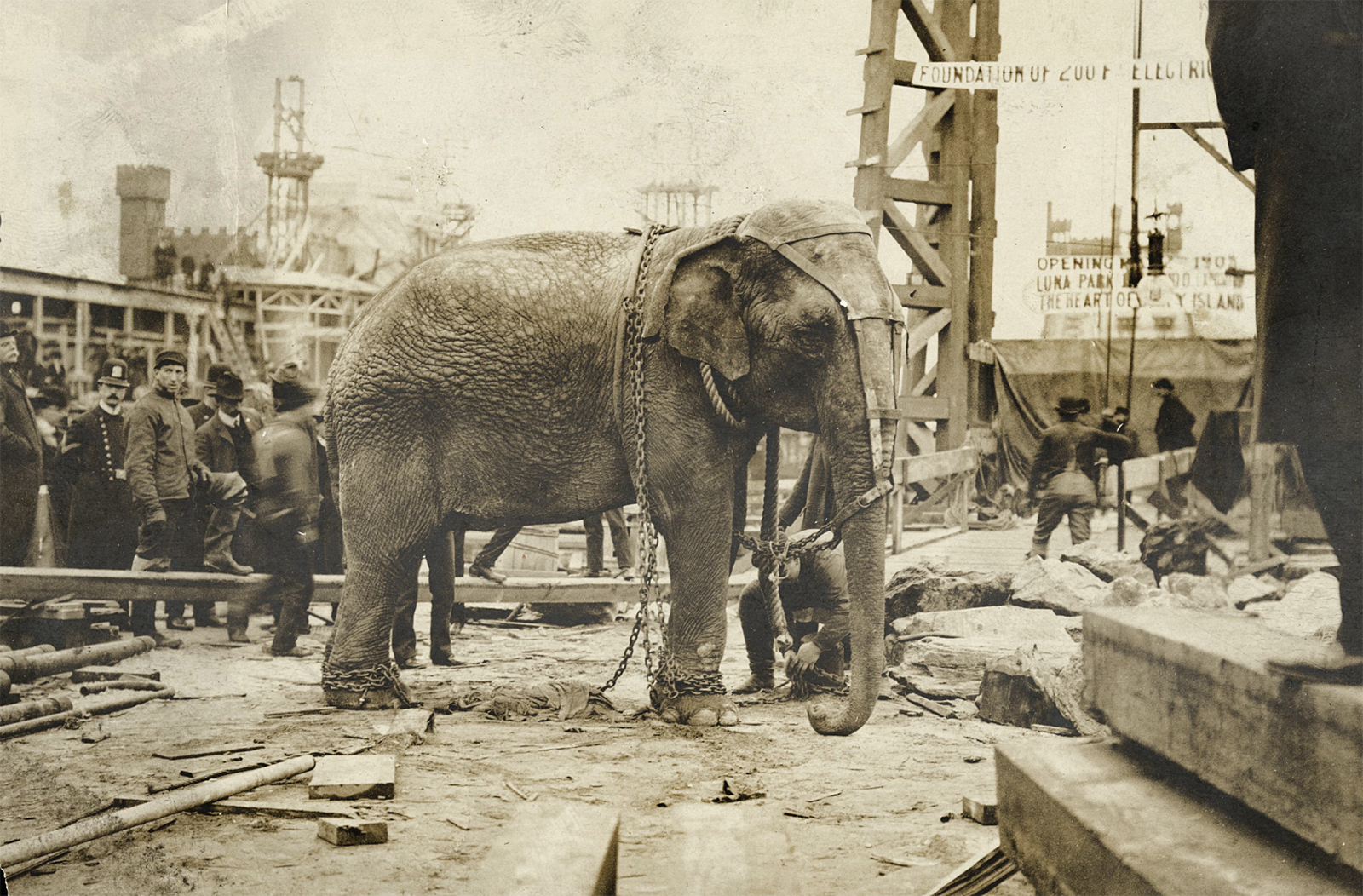
Topsy chained and roped for execution at Luna Park, 1903. A large banner proclaiming Luna Park as the "Heart of Coney Island" hangs in the background at upper right.
Luna Park began its convoluted history in 1903 with what is probably the most brutal and horrific event in Coney Island’s history. It was 120 years ago that Luna’s owners sought to publicize the park’s grand opening by publicly murdering Topsy the elephant, a sad and abused creature who at the time was being used by the park to haul construction materials down Surf Avenue.
Topsy endured a tortured history that began when she was captured in Southeast Asia when only a year old and smuggled into the U.S. and forced to perform in circuses. Sadly, she eventually wound up in the hands of Luna Park’s founders.
Like many performing animals, she’d suffered a lifetime of abuse from the public and from a series of cruel trainers. She’d recently gained notoriety for killing a drunk who’d fed her a lit cigar. The press dubbed her a "killer," but she was actually a gentle creature who was only reacting to incidents of mistreatment.
Luna’s owners soon considered Topsy a problem and no longer found her useful to them. They came up with a sadistic publicity stunt to get rid of her while at the same time advertising the May 1903 opening of the new Luna Park. They decided that charging admission to the gory public execution of an elephant would get them the attention the park needed.
According to Smithsonian Magazine, the original plan was to strangle Topsy by hanging, but the ASPCA objected, describing that method as “unnecessarily cruel.” Luna’s executioners decided to use electrocution instead. The killing of a tortured animal would be Luna Park’s first attraction.
On a cold January morning, the unsuspecting elephant was led into the park, which was still under construction, and bound with chains and ropes below the framework of the park’s grand tower. Topsy was then fitted with copper shoes, wired up to electric cables, and fed 460 grams of cyanide-laced carrots to prepare her for her fate.
A crowd of photographers and onlookers invited by Luna Park’s owners was soon surrounded by hundreds of spectators who climbed fences or paid to stand on rooftops to get a glimpse of the horrifying spectacle. A film crew sent by Thomas Edison recorded the execution.
At 2:45 a switch was thrown and 6,000 volts of electricity coursed through Topsy's body, toppling her over and killing her. Her Luna Park nightmare had finally ended.
Luna Park opened a few months later to huge fanfare. Ironically promoting itself as the “Electric Eden,” the park had a million light bulbs strung over a small city of fantasy architecture composed of towers, minarets, spires, castles, domes, and globes. What began as a fascination with electricity soon wore off though, and the park lost its luster. By 1911, the park’s owners, Thompson and Dundy, were consumed by personal and financial problems. Alcoholism, fraud, and gambling debts forced Luna Park into bankruptcy that same year.
New owners expanded the park and brought in some new rides. Luna never really recovered and floundered during the Great Depression. The park then burned down in a series of dramatic fires during the 1940s. Luna Park faded into history, the name used for a housing project built on the site.
A few years ago a new amusement park in Coney Island resurrected the Luna name. This seemed fine until 2023 when the new park's owners began a publicity campaign implying that they have been in business for 120 years and suggesting that they are the original Luna Park. The media picked it up and ran with it. "Luna Park Celebrates Its 120th year in Coney Island," was a headline trumpeted by Fox News and other media.
When you appropriate history, you are claiming ownership of that history. It becomes your tarnished past. The new Luna Park has now embraced a tarnished, cruel legacy that brought shame to Coney Island. Appropriating the name means appropriating the shame. There's a terrible tradition of animal abuse attached to the Luna Park name that goes beyond Topsy. Performing elephants, horses, and camels were also mistreated during the park's early years. It's nothing to be proud of. Perhaps it's time for Luna Park to create a Topsy memorial and acknowledge a barbaric event that took place 120 years ago in Luna Park's name. Topsy should not be forgotten.
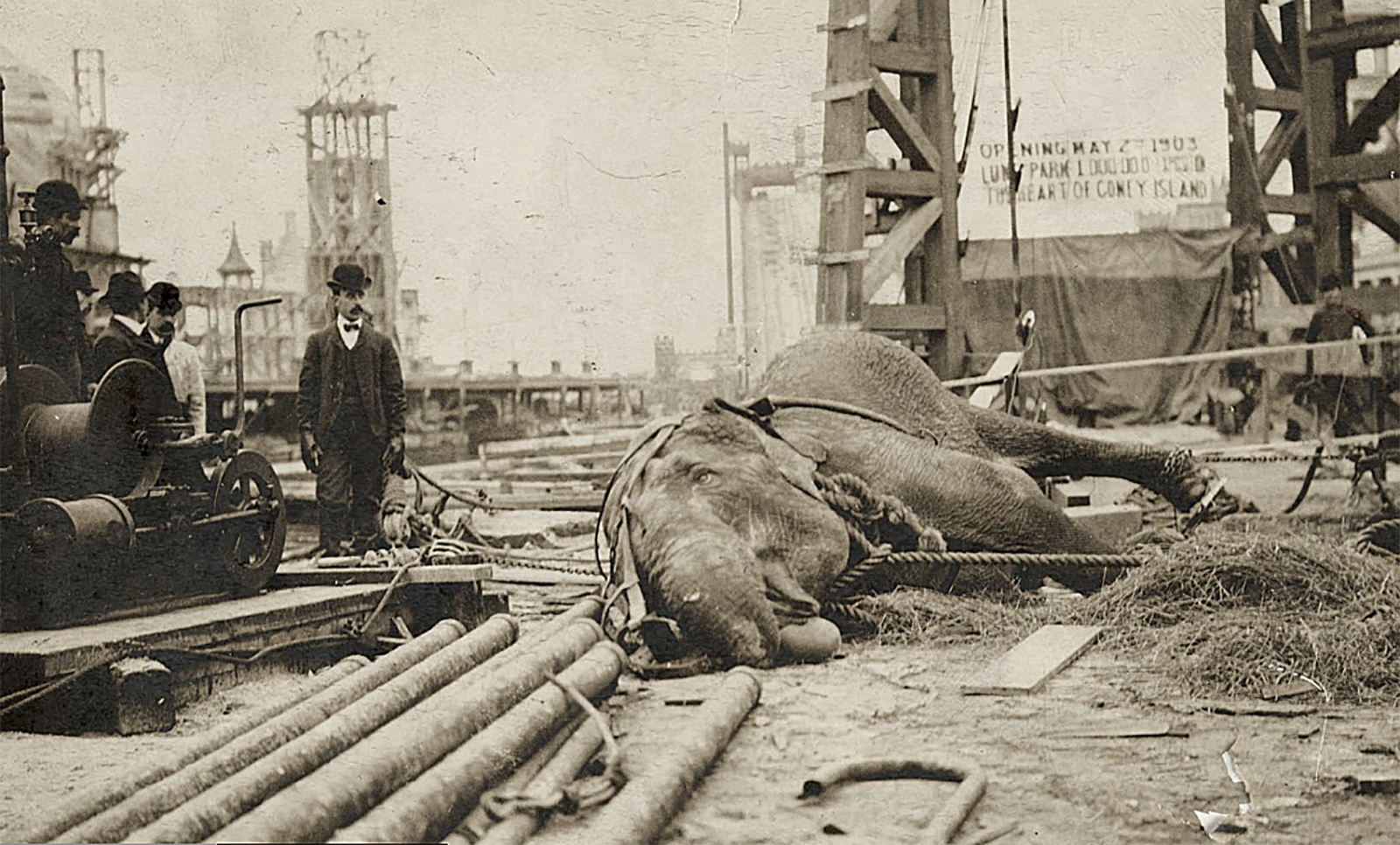
Topsy's body after execution at Luna Park 120 years ago.
